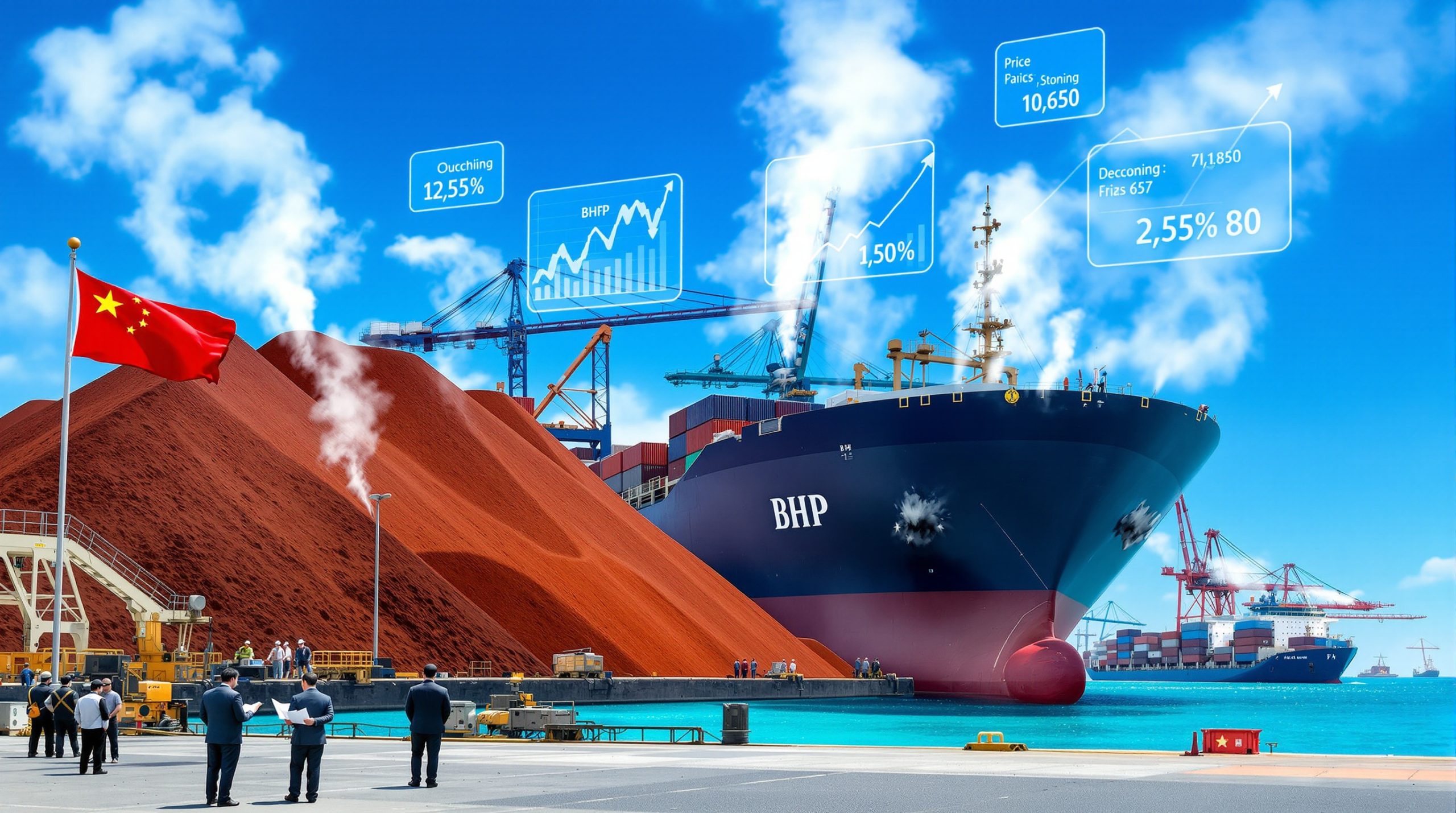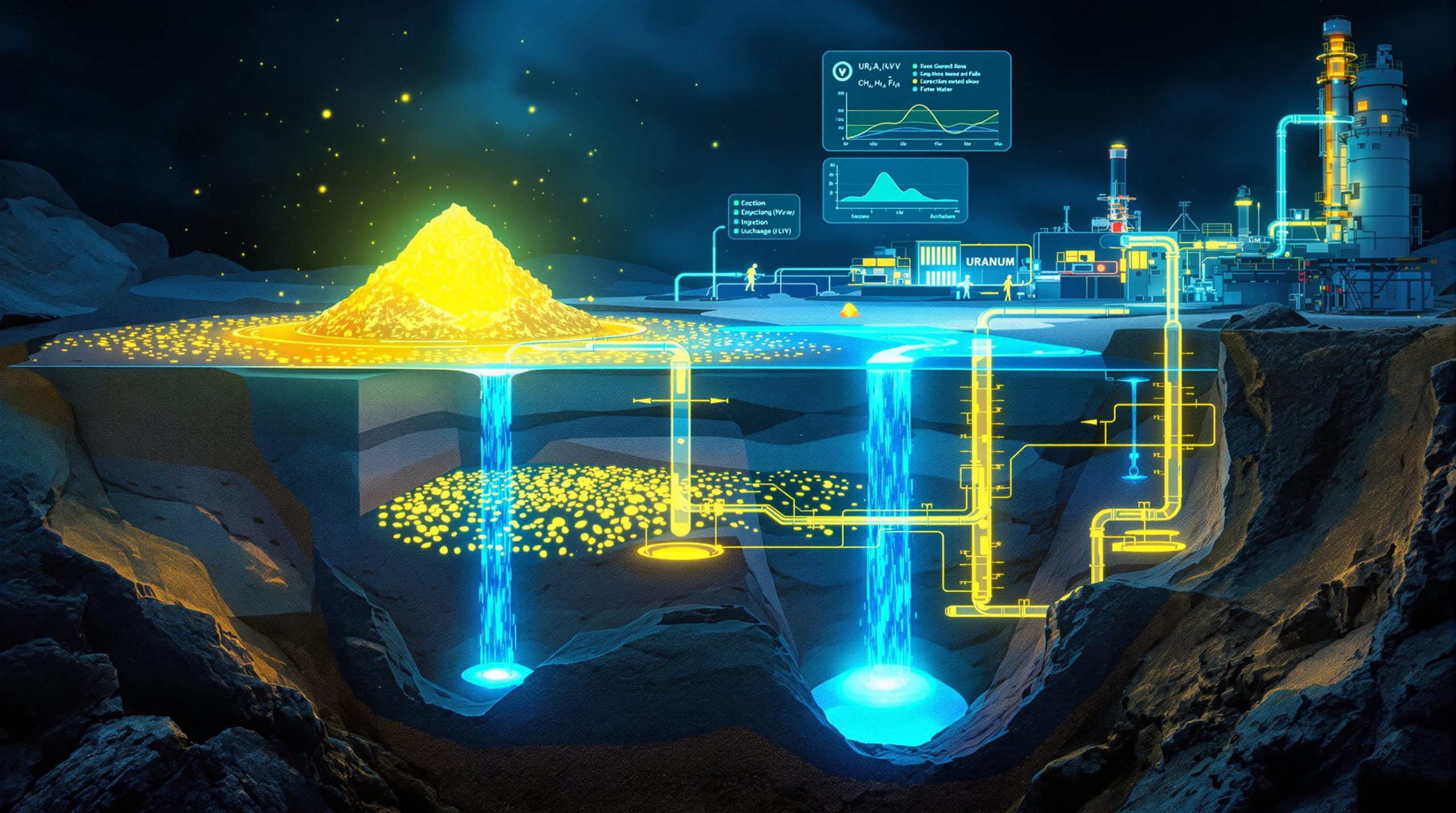Argentina's Mining Investment Landscape: Political Uncertainty and Electoral Impact
Argentina's mining sector faces a significant investment pause ahead of the country's crucial October 26, 2025 midterm elections. This electoral uncertainty has created an environment where mining companies and investors hesitate to commit to new projects or expansions despite the country's abundant mineral wealth. The situation highlights how political stability directly impacts resource development in a nation possessing substantial untapped mining potential.
Current Investment Climate in Argentine Mining
Mining companies have effectively frozen investment decisions until post-election clarity emerges, maintaining only existing operations while putting expansion plans on hold. According to Roberto Cacciola, president of the Argentine Chamber of Mining Companies (CAEM), "No one is going to make any decisions these days. That's crystal clear" (Reuters, October 2025).
The uncertainty stems from both domestic political factors and global market conditions, creating a complex environment where investors prefer a wait-and-see approach rather than committing significant capital.
Project timelines for both new developments and expansions are experiencing delays, with companies reluctant to advance without greater clarity on the political and regulatory environment they'll face in coming years.
Political Factors Driving Investment Hesitation
President Javier Milei faces declining approval ratings as he approaches the midpoint of his term, making these midterms a crucial test of his administration's economic policies. With an opposition-controlled Congress creating legislative gridlock for mining reforms, investors worry about the post-election policy direction.
The breakdown in dialogue between federal authorities and provincial governments adds another layer of complexity. This strained relationship complicates the regulatory environment since provinces control mineral rights under Argentine law.
Mining executives point to uncertain environmental regulations, particularly regarding the scope of glacier protection laws, as another factor hindering investment decisions during this electoral period.
What's at Stake for Argentina's Mining Industry?
The current investment pause threatens Argentina's ability to capitalize on its substantial mineral resources at a time when global demand for critical minerals is growing. With energy transition metals like lithium experiencing high demand worldwide, the timing of this political uncertainty poses challenges for the country's development trajectory.
Economic Impact of Mining Investment Pause
Argentina's mining sector projects record exports of $5.09 billion for 2025, representing a 14% increase over 2024 figures, according to CAEM estimates. This growth projection faces risk if new projects continue to stall amid political uncertainty.
The mining sector provides crucial foreign exchange during Argentina's ongoing economic recovery efforts. With 80% of mining exports derived from gold production, followed by lithium (14%) and silver (12%), any disruption affects multiple mineral streams.
Beyond direct export revenue, delayed mining investments impact potential job creation and regional development, particularly in economically challenged provinces where many mining operations are located.
Tax revenue growth from mining operations remains constrained during this period of investment hesitation, limiting fiscal resources for an economy still working toward stability.
Key Mining Sectors Affected by Electoral Uncertainty
| Mineral | Current Status | 2025 Projection | Key Challenges |
|---|---|---|---|
| Gold | 10% YoY production decline | 39% below 2018 levels | Export duties limiting profitability |
| Lithium | Growth despite challenges | 54% production increase forecast | Global oversupply and price volatility |
| Silver | Stable contribution | 12% of export value | Withholding taxes affecting margins |
| Copper | Largely undeveloped | Significant untapped potential | Regulatory uncertainty and political risk |
Gold production continues to struggle, with output projected to fall 10% year-over-year in 2025, putting production levels 39% below 2018 figures. Industry representatives cite export duties as a primary factor limiting investment in this sector.
Lithium presents a more positive outlook with production forecast to rise 54% in 2025 and exports increasing 43%, though global oversupply concerns and domestic cost increases have slowed some project timelines. The latest Argentina Lithium Insights reveal that "the price drop is delaying construction of some planned projects" (Reuters, October 2025).
Argentina's copper potential remains largely untapped, with substantial reserves that could drive future growth if the regulatory environment stabilizes post-election. Recent copper supply forecast indicates significant opportunities for growth in this sector.
Why Is Provincial-Federal Coordination Critical for Mining Development?
Argentina's constitutional structure creates a unique governance environment for mining operations, with provinces controlling mineral resources while the federal government manages broader economic and trade policies.
Constitutional Framework for Mining Governance
The 1994 reform of Argentina's Constitution established provincial control over mineral rights under Article 124, creating a dual regulatory framework that requires investors to navigate multiple jurisdictions.
This constitutional arrangement means mining companies must secure approvals from both provincial authorities for exploration and extraction rights, while also adhering to federal regulations on exports, currency controls, and environmental standards.
The system works effectively when federal and provincial governments maintain cooperative relationships, but breaks down during periods of political tension like the current pre-election climate.
Interprovincial variations in mining regulations and environmental standards further complicate the investment landscape, requiring companies to adapt strategies across different operating regions.
Current Governance Challenges
The breakdown in dialogue between President Milei's federal government and provincial governors has undermined investor confidence. Cacciola emphasized that restoring this dialogue is essential for ensuring effective governance in the mining sector.
Inconsistent application of regulations across different provinces creates operational challenges for companies with multiple projects, increasing compliance costs and regulatory risk.
Uncertainty regarding environmental protections, particularly the interpretation of glacier protection laws, presents significant obstacles for project development in certain regions. The industry has called for greater clarity on these regulations.
The lack of coordinated infrastructure development between federal and provincial authorities hampers mining project viability, especially in remote regions where access to transportation networks, power supplies, and water resources requires multi-level government cooperation.
What Economic Indicators Show Mining's Importance to Argentina?
Despite current challenges, mining represents a significant economic opportunity for Argentina, with projections showing substantial growth potential if political stability can be achieved.
Export Projections and Economic Contribution
CAEM estimates record mining exports of $5.09 billion for 2025, representing a 14% increase compared to 2024 figures. This growth comes despite headwinds in certain mineral sectors.
Gold continues to dominate Argentina's mining export profile, accounting for approximately 80% of mining export value despite production declines in recent years. The record high gold prices have somewhat offset production challenges.
Lithium exports are expected to grow by 43% in 2025, reflecting Argentina's growing importance in supplying this critical energy transition mineral despite global price volatility.
Mining provides critical foreign exchange during Argentina's ongoing economic recovery, contributing to external account stability in an economy that has historically faced currency challenges.
Employment and Regional Development Impact
Mining operations are concentrated in some of Argentina's economically challenged provinces, providing crucial employment opportunities in regions with limited alternative industries.
The investment pause is beginning to affect employment stability, with Cacciola noting that while "there are no major layoffs, there are early signs of restructuring" in response to project delays and market pressures (Reuters, October 2025).
Mining investment drives regional infrastructure development, including roads, power systems, and water management facilities that benefit broader communities beyond mine sites themselves.
The multiplier effect of mining operations supports numerous local businesses through supply chains and service provision, making the sector's health important for regional economic stability.
How Are Global Market Conditions Affecting Argentina's Mining Outlook?
Beyond domestic political factors, global market conditions create additional challenges for Argentina's mining sector, particularly in the lithium industry where price volatility complicates investment decisions.
Global Lithium Market Dynamics
The lithium market faces global oversupply concerns that have caused price fluctuations, impacting the economics of Argentina's projects. These market conditions have led companies to reassess timelines for new developments.
Project economics for Argentine lithium operations face challenges from falling international prices, requiring companies to focus on cost efficiency to maintain competitiveness.
Construction delays for planned lithium projects reflect both market uncertainty and pre-election political concerns, creating a compound effect that slows sector development.
Argentina faces competitive pressure from lower-cost lithium producers globally, particularly established operations in neighboring Chile that benefit from more mature infrastructure and processing facilities.
Gold Sector Challenges
Argentina's gold production continues to decline despite relatively favorable global gold prices, highlighting how domestic factors can override international market conditions.
Rising operational costs within Argentina affect the competitiveness of the country's gold mines compared to operations in other jurisdictions with more stable cost structures.
Export duties specifically reduce profit margins for Argentine gold producers compared to regional competitors, creating a comparative disadvantage in attracting investment.
Aging mines require significant new investment for sustained production, but the current political uncertainty delays capital commitments needed for mine life extensions or expansions. The latest gold price forecast suggests favorable conditions that could benefit Argentina if regulatory issues are resolved.
What Policy Reforms Are Mining Companies Seeking?
The mining industry has identified specific policy changes needed to restore investor confidence and unlock Argentina's mineral potential once electoral uncertainty subsides.
Industry Policy Recommendations
CAEM has called for the elimination of export duties on gold, lithium, and silver, which currently reduce profit margins and investment attractiveness compared to other mining jurisdictions.
The removal of withholding taxes on precious metals represents another key industry demand, aimed at improving project economics and international competitiveness.
Industry representatives emphasize the need for clarity on environmental regulations, particularly regarding the interpretation and application of glacier protection laws that affect mining activity in certain regions.
Infrastructure investment to improve sector competitiveness ranks high on the industry wish list, particularly for remote mining regions lacking adequate transportation networks and energy supply.
The establishment of a stable and predictable regulatory framework that transcends election cycles would provide the long-term certainty needed for major mining investments with multi-decade horizons.
Regulatory Hurdles Impacting Development
Complex permitting processes involving multiple levels of government delay project timelines, increasing costs and regulatory risks for investors.
Environmental approval uncertainties create project risks, particularly for operations in environmentally sensitive areas where regulatory interpretations may change with political shifts.
Currency controls affect operational financing flexibility, complicating international companies' ability to manage capital flows between Argentine operations and global portfolios.
Export restriction concerns limit long-term investment planning, as companies fear potential policy changes that could affect their ability to market minerals internationally.
What Is the Post-Election Outlook for Mining Investment?
Industry analysts and mining executives are looking beyond current electoral uncertainty to assess potential scenarios for Argentina's mining sector following the October midterms.
Potential Post-Election Scenarios
Resolution of federal-provincial tensions could unlock stalled projects, particularly if the election results facilitate improved dialogue between national and provincial authorities.
Clarification of economic policies, especially regarding export duties, withholding taxes, and currency controls, may restore investor confidence regardless of which political forces gain strength.
Infrastructure development plans for remote mining regions will be critical for accelerating project timelines, requiring coordinated action between federal and provincial governments.
Tax and regulatory reforms have the potential to significantly improve project economics, particularly for marginal operations currently held back by policy uncertainty.
Long-Term Investment Potential
Argentina's untapped copper reserves represent a major future development opportunity, with the potential to diversify the country's mining portfolio beyond current gold and lithium dominance.
The country's position in the "lithium triangle" alongside Chile and Bolivia secures its role in supplying energy transition materials, despite current market volatility.
Precious metals production stabilization requires policy certainty to enable the capital investments needed to reverse the decline in gold output and maintain silver contribution.
Exploration activity will likely resume once electoral uncertainty resolves, potentially identifying new resource opportunities that could drive the next generation of mining developments.
How Does Argentina Compare to Regional Mining Competitors?
Argentina's current investment pause occurs within a competitive regional context, with neighboring countries actively courting mining investment through more stable policy environments.
Regional Competitive Position
Chile's established mining framework provides a stark contrast to Argentina's uncertainty, with consistent regulations and clear permitting processes attracting steady investment despite occasional tax debates.
Peru's mining sector offers lessons in balancing investment attraction with community relations, though the country has faced its own political challenges affecting mining development.
Brazil's recent mining policy reforms create additional regional competition for investment capital, with regulatory improvements aimed at streamlining approvals for new projects.
Regional infrastructure integration initiatives could potentially benefit cross-border mining projects, though political coordination challenges remain significant.
Competitive Advantages and Disadvantages
| Factor | Argentina's Position | Regional Context |
|---|---|---|
| Mineral Potential | Significant untapped resources | Strong but facing increasing competition |
| Regulatory Stability | Uncertain pending elections | Neighboring countries offering more predictability |
| Infrastructure | Underdeveloped in key mining regions | Regional disparities in quality and availability |
| Operating Costs | Rising due to economic conditions | Varying competitiveness across the region |
| Political Risk | Elevated during electoral period | Present throughout region but at different levels |
Argentina maintains competitive advantages in mineral resource quality and diversity, particularly in lithium grades and gold potential, though these advantages are offset by regulatory uncertainty.
Operating costs have risen faster in Argentina than in some neighboring countries, eroding competitive advantages that previously attracted investment.
Infrastructure deficiencies in key mining regions increase development costs compared to more established mining districts in Chile and parts of Peru.
The country's current political risk assessment ranks higher than regional competitors during this electoral period, though this factor could improve following the October vote. Understanding industry evolution trends is crucial for contextualizing Argentina's position.
FAQ: Argentina's Mining Investment Climate
How significant is mining to Argentina's economy?
Mining has grown into a crucial sector for Argentina's economy, with projected exports of $5.09 billion for 2025 representing a 14% increase over 2024 levels. The sector provides essential foreign exchange during economic recovery efforts and supports regional development in provinces with limited industrial alternatives. While gold currently dominates export value (80%), lithium represents a growing contribution (14%) with substantial future potential.
What specific reforms do mining companies want from the government?
Mining companies advocate for eliminating export duties on minerals and removing withholding taxes on precious metals to improve project economics. They also seek clarity on environmental regulations, particularly regarding glacier protection laws that affect development in certain regions. Infrastructure investment in mining areas ranks high on industry priorities, along with establishing a stable regulatory framework that provides certainty across electoral cycles.
Will lithium production continue to grow despite current challenges?
Lithium production is projected to increase by 54% in 2025, with exports rising 43%, despite global oversupply concerns and price volatility. While some planned projects face delays due to market conditions and pre-election uncertainty, Argentina's position within the "lithium triangle" ensures continued development interest. The pace of growth may moderate compared to earlier projections, but the sector's expansion trajectory remains positive for the medium term.
What happens to mining investment after the midterm elections?
Industry analysts expect investment decisions to resume once electoral clarity emerges, though the timing and scale will depend on the post-election political landscape. Resolution of federal-provincial tensions, policy clarifications, and potential regulatory reforms will influence investor confidence. Companies with existing operations are likely to proceed with delayed expansion plans first, followed by development decisions for new projects if policy conditions improve.
How does Argentina's mining potential compare globally?
Argentina possesses world-class mineral resources, particularly as part of the "lithium triangle" that contains the majority of global lithium reserves. The country also maintains significant gold and silver production capacity despite recent output declines. Perhaps most importantly, Argentina holds substantial undeveloped copper deposits that could position it as a major global mining jurisdiction if political and regulatory challenges can be addressed. This mineral diversity provides potential for balanced development across multiple commodity cycles.
Further Exploration
Readers interested in learning more about Argentina's mining sector and political dynamics can explore related educational content from Kitco News, which provides ongoing coverage of economic and political developments in Latin America's resource sectors.
The interplay between provincial control of mineral resources and federal economic policies creates a unique governance framework that requires close monitoring during periods of political transition. Understanding these dynamics provides crucial context for evaluating the mining sector's development trajectory following the October midterms.
Want to Profit from the Next Major Mineral Discovery?
Gain instant alerts on significant ASX mineral discoveries through Discovery Alert's proprietary Discovery IQ model, turning complex mining data into actionable investment insights. Visit the Discovery Alert discoveries page to understand why major mineral discoveries can lead to substantial market returns and begin your 30-day free trial today.




